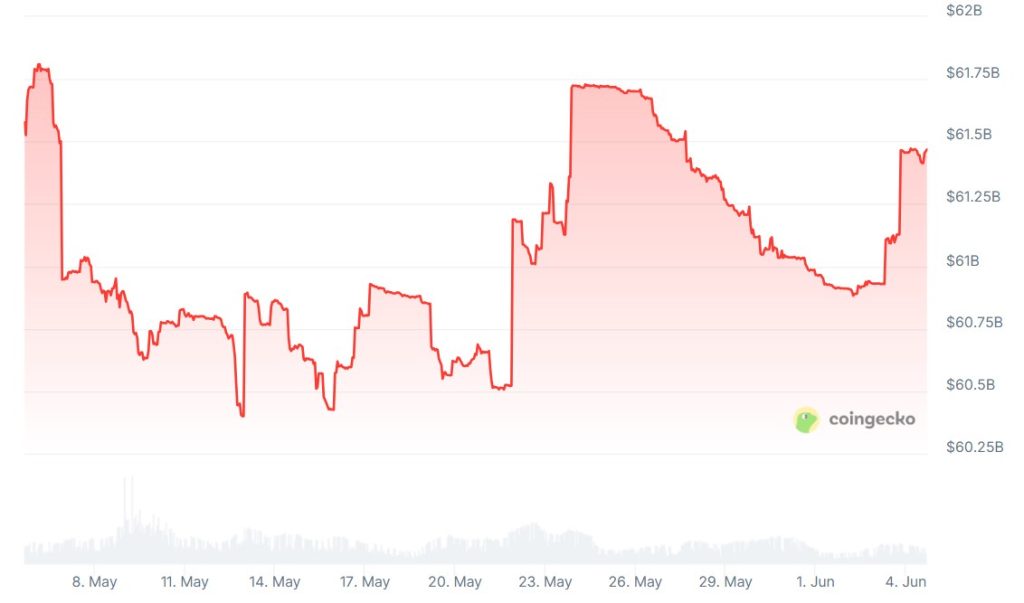Russian Central Bank’s Bold Move: Embracing Foreign Stablecoins
The landscape of cryptocurrency regulation in Russia is undergoing a significant transformation. The Central Bank of Russia has laid out an ambitious plan that allows domestic corporations to dive into the world of foreign stablecoins. However, as enticing as this may sound, it comes with notable restrictions that could limit access to popular assets like Tether (USDT) and USD Coin (USDC). Let’s delve deeper into what this means for Russian firms and the broader cryptocurrency landscape.
Understanding the Proposal
According to an official announcement and a report from Russian media outlet RBC, the Central Bank has put forth a proposal aimed at promoting the acquisition of “foreign digital rights” for Russian legal entities that do not qualify as “qualified investors.” This means that general corporations could potentially trade in foreign stablecoins without any barriers. The bank is currently inviting public feedback on this initiative until June 15, leaving room for discussions and debates among stakeholders.

Stablecoins: A New Digital Frontier
RBC highlighted an intriguing point: not all cryptocurrencies fall under this newly defined category of “foreign digital rights.” Specifically, the planned changes do not appear to permit the trading of either USDT or USDC for Russian firms. This likely stems from updated regulations that explicitly prohibit assets tied to “securities issued by unfriendly issuers.” Yet, there’s a silver lining; the Central Bank has made exceptions for those using USDT and USDC for facilitating cross-border transactions.
The Implications of US Treasury Reserves
Amid these developments, it’s important to take a closer look at the underlying infrastructure of popular stablecoins like Tether. Reports indicate that Tether’s reserves are largely composed of cash, cash equivalents, short-term deposits, and US Treasury bills. This financial backing raises questions about how effectively Russian firms might be able to harness these assets under the new regulations.
Circle, the entity behind USDC, similarly gathers significant portions of its reserves from short-term US Treasury bills, further complicating Russia’s potential engagement with these products. However, the silver lining lies in the proposal’s potential to expand financial cooperation with BRICS nations and other allied countries.
BRICS and Future Stablecoin Innovations
The timing of this shift aligns with growing movements among BRICS nations, where several tech companies have begun exploring their own stablecoin initiatives. Following the recent BRICS Summit in Kazan, discussions have emerged regarding the development of a gold-backed stablecoin, aimed at promoting trade that circumvents the reliance on the US dollar. This could represent a significant leap towards a multipolar financial landscape.
Ukraine says it attacked the Crimean Bridge with explosives as Russia closes traffic on the route linking the annexed Black Sea peninsula with the Russian mainland https://t.co/RK1GJ4Y34b— Bloomberg (@business) June 3, 2025
Russia’s Digital Asset Market: A Growing Arena
Moreover, the Central Bank’s plans aren’t just limited to stablecoins. The regulatory body aims to broaden the scope of Russia’s digital financial assets (DFAs) market by proposing a new framework that lowers the investment threshold for ordinary citizens and corporations alike.
Currently, qualified investors can invest up to 600,000 rubles (approximately $7,570) in DFAs annually. The new proposal seeks to nearly double that limit to 1 million rubles ($12,618), thereby allowing more companies to explore digital assets without the restrictions of ‘qualified’ status. If the proposal is accepted without significant opposition, implementation could occur within this month.
Foreign exposure to US assets may be lower than feared – column by @ReutersJamie https://t.co/4N528c8O5K pic.twitter.com/2YBnZoQf8W— Reuters Energy and Commodities (@ReutersCommods) June 3, 2025
Why This Matters
These regulatory shifts could signal a transformative phase for Russia’s engagement with global digital finance. By opening up avenues to foreign stablecoins while fostering stringent restrictions on certain assets, the Central Bank aims to balance financial innovation with a cautious approach to geopolitical tensions.
Expert Opinions: Insights from Analysts
Analysts speculate that this move could either enhance the robustness of Russia’s digital asset market or limit its interaction with internationally recognized stablecoins, leaving firms to navigate a complex web of regulations and market dynamics. “This could be a double-edged sword,” notes a cryptocurrency expert. “It may drive innovation within allied nations but poses risks of isolation from major financial ecosystems.”
Future Outlook: Navigating the Uncertain Waters
As the proposal undergoes public scrutiny, the reaction from market participants will be pivotal in shaping Russia’s digital future. The success of these initiatives could lead to increased economic cooperation with BRICS countries and a re-evaluation of Russia’s strategies in global trade.
Conclusion: Join the Conversation
With the Central Bank of Russia pushing the boundaries of cryptocurrency regulation, the question remains: How will Russian firms adapt to these changes? Will they embrace this new frontier of digital finance, or will the restrictions prove too great a hurdle? We invite you to share your thoughts on this evolving story and its potential implications for the cryptocurrency landscape!

